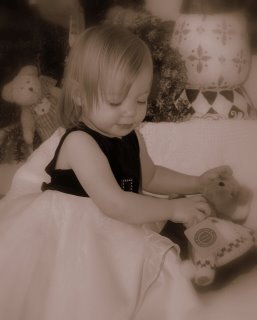Photographing-The-Young
 by: Low Jeremy
by: Low JeremyIf there were one most exciting but stressful kinds of photo shoots there is—that would be child photography. Started out as a hobby of parents who are into photos and photography, the craft has evolved into something more commercialized and a viable source of income through the years.
But for parents who would want to capture the best moments of their children, professional photography lessons wouldn’t be that necessary, all they have to do is to learn about certain photography technicalities and observe the attitude and mood swings of their children.
Parents should bear in mind that when trying to photograph their children, they should be ready for occasional tantrums and crying. When this happens, let the child calm down by giving them something that would catch their attention like a toy.
Younger children like those tots under 5 years old are not very conscious or aware of the camera but this doesn’t mean that they are very interested in the ‘photo shoot’. To get their attention, make sure that you have something that will get their attention.
OTHER CHILD PHOTOGRAPHY STRATEGIES
Portraits—especially of children—never fail to evoke feelings to anyone. If you’re a budding professional child photographer, it would be better if you’ll have a brief background in child psychology and you better to create your own strategies by now.
Here are some strategies you can work on and try to reinvent over time:
Strategy no. 1: Prepare for the best and the worst.
Before the actual day of the shoot, make sure that you pay a visit to the house of the family to give you an idea what kind of child/ren you are going to deal with. It is also advisable to meet them personally and memorize their names to create familiarity.
You can also have a sort of ocular inspection around the area so you can picture the ideal background and set up mentally. Before leaving for the actual photo shoot, double check all the necessities and equipment you will need.
Strategy no. 2: Practice the power of smile.
Being friendly or possessing a friendly aura will draw children nearer to you. Smiling will also make them more comfortable dealing with you throughout the shoot.
Strategy no. 3: Impress them your “gears.”
Get children’s attention by impressing them with stuff they don’t know yet. Since they are generally inquisitive, you can get their attention by letting them touch and “play” with some of your simple photography equipment.
Strategy no. 4: Set the background.
Although a photo studio would give you all the comforts you need in doing your job, this wouldn’t ensure a good result for children photography. It would be best if you set a backdrop or location where children can roam around and express themselves freely.
Strategy no. 5: Back to basics with the natural approach.
Do not force a setting or set up where the child is not comfortable. It is best to photograph children in their best elements like riding their own bike or doing some art stuff. These natural settings would be more vivid in the coming years compared to those taken in a stiff and formal environment.
Strategy no. 6: Know the clothing basics.
Days before the shoot, tell the parents to show their kids what they will be wearing. This would ensure the comfort of the child during the shoot.
Strategy no. 7: Bring your best and the most appropriate photography equipment.
Make sure that you bring the best equipment to produce best results. Basics include digital or film SLR camera, variety of lenses, studio lights, flashgun, spare batteries, and compact flash or rolls of film.
Strategy no. 8: It’s all in the light.
Aside from having a good subject, make sure that you set up a good lighting because it will greatly affect the overall outcome of the photo.
Strategy no. 9: Be an “image capturer.”
Always be on guard to capture the best moments throughout the shoot. Always have your finger on the shutter button while your eyes are near the camera.
Strategy no. 10: Always focus on the “window of the soul.”
Needless to say, photographs where the eyes of subjects are tuned into camera produce the best photographs ever.









